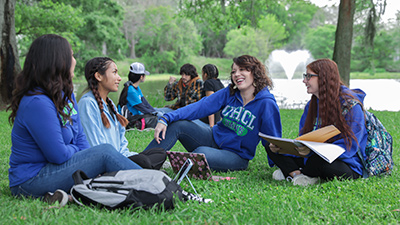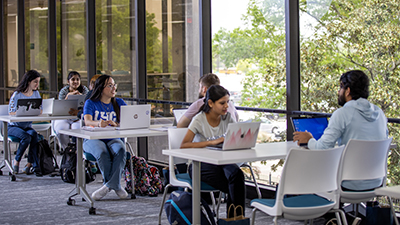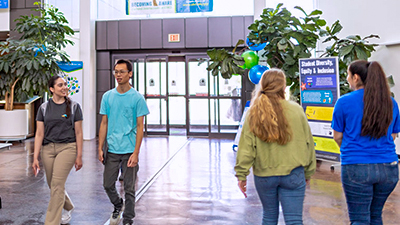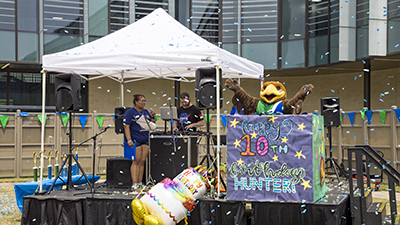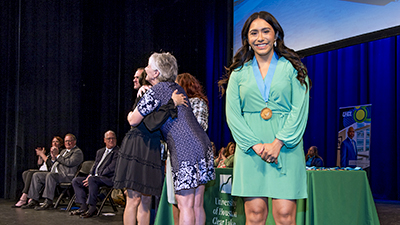
Education Notes
Bluebird NestWatch Program at UHCL: 2024 Highlights and Looking Ahead
By Debbie Bush, Web Assistant, and Ralph Faxel, Texas Master Naturalist

Eastern bluebirds (Sialia sialis) are an important part of local ecosystems, and the Bluebird NestWatch project at the Environmental Institute of Houston (EIH) works to monitor and protect the resident bluebirds at the University of Houston-Clear Lake (UHCL). In 2024, seven volunteers monitored six nest boxes on campus, documenting 29 eggs and 22 fledglings from four active boxes (see Table 1). Notably, Nest Box #2 hosted three successful clutches. The 2024 nesting season came with its highs and lows, but challenges highlighted areas for improvement as the team moves forward.
| Nest Box # | NB#1 | NB#2 | NB#3 | NB#4 | NB#5 | NB#6 |
|---|---|---|---|---|---|---|
| Attempts | 1 | 3 | 2 | 0 | 1 | 0 |
NestWatch, a monitoring program run by the Cornell Lab of Ornithology at Cornell University, tracks bird reproductive patterns, including nesting timelines, the number of eggs laid, hatch rates, and hatchling survival. Females typically lay one egg per day but don’t begin incubating until the last egg is laid. This ensures synchronized development, as the eggs require a constant temperature (around 98–100°F) to hatch together. As an altricial species, bluebird hatchlings are born completely dependent on their parents, with closed eyes, minimal feathers, and an inability to regulate their body temperature. This contrasts with precocial birds like ducks, which hatch more self-sufficient.
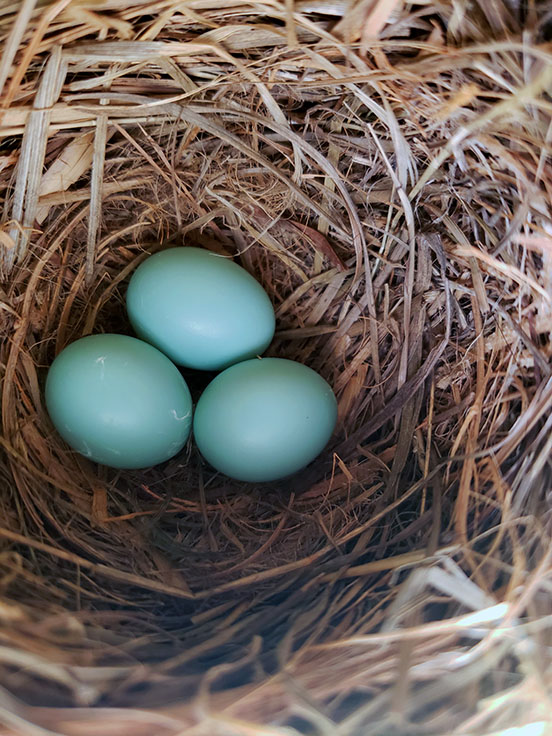
Eastern bluebird eggs are distinct with their beautiful blue hue. Photo by Patty Trimingham.
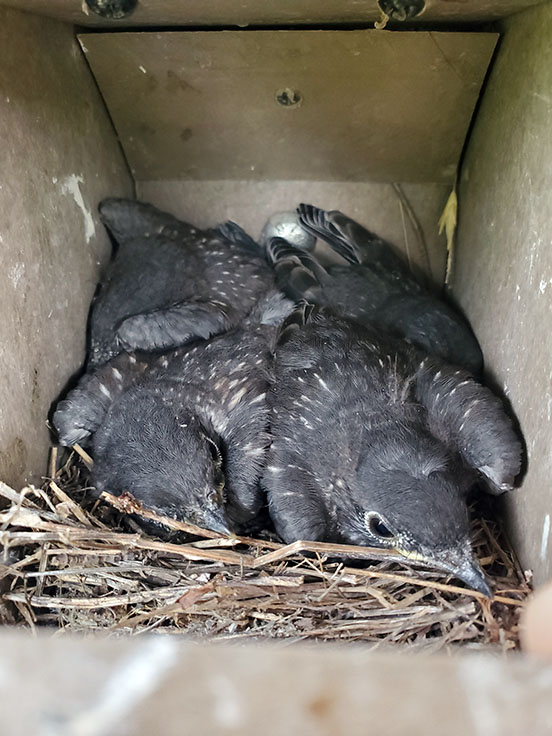
Fledglings begin to test out their wings 15 to 18 days after hatching. Photo by Martin Wolfe.
While the EIH project had successes, it faced challenges, including Hurricane Beryl and technical issues with data logging. One male bluebird was also found dead due to trauma. Despite these setbacks, the 2024 Bluebird NestWatch project demonstrated the value of monitoring and protecting eastern bluebirds—the active participation of volunteers allowed for consistent data collection and timely response to issues. Improvements for 2025 include relocating underused boxes and enhancing reporting methods. The team aims to build on these efforts and strive for even better outcomes this year.
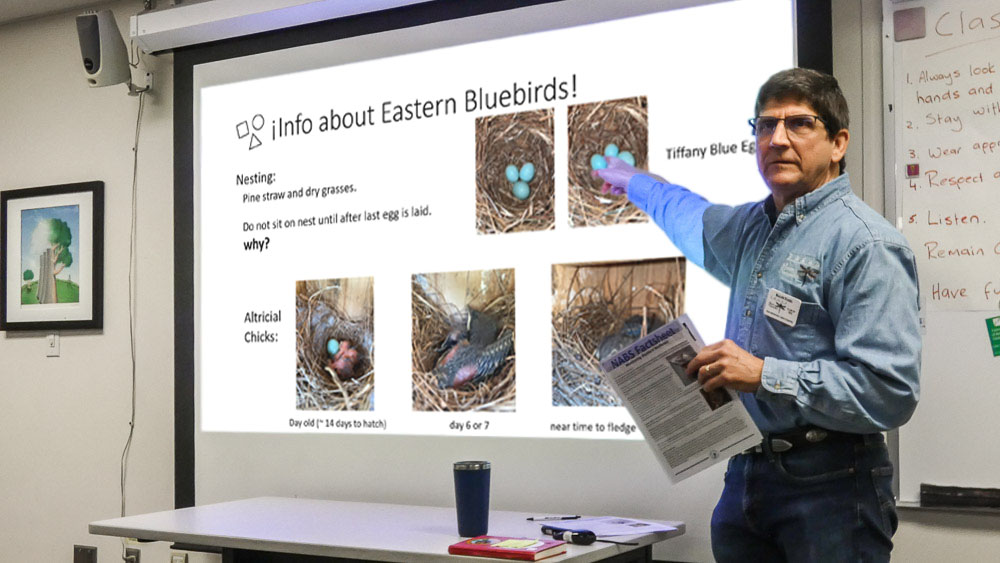
Thank you to everyone who participated in the inaugural NestWatch program at EIH. If you would like to participate in the 2025 nesting season, please join our workshop on January 28 to learn about nest monitoring, data collection, and conservation techniques. Whether you’re an expert or a beginner, your efforts can help protect these amazing birds.
Let’s make this year another successful season for our campus bluebirds!
Bluebird Basics & NestWatch Monitoring Workshop
Tuesday, January 28, 2025 | 10–11:30 am
North Office Annex I (NOA I)
Environmental Institute of Houston
University of Houston-Clear Lake
2700 Bay Area Blvd, Houston, TX 77058
Join us for a hands-on workshop covering eastern bluebird basics and nest monitoring. Led by Texas Master Naturalist Ralph Faxel, participants will learn how to use NestWatch to monitor nest boxes located on the UH-Clear Lake campus.
Participants are encouraged to dress appropriately for an outdoor tour of the nest boxes. This is a free event, but registration is required.
